- Honda Motorcycle & Scooter India
- HMSI
- Honda Motor Co
- Toshihiro Mibe
- electrification
- ADAS
- Nissan
- Mitsubishi Motors
Honda Reassesses Electrification Strategy Amid Shifting Global Market Dynamics
- By Nilesh Wadhwa
- May 20, 2025
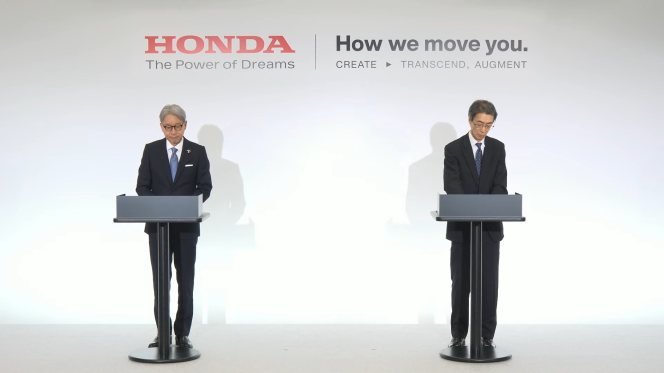
Japanese automotive major Honda Motor Co, has announced a strategic realignment of its electrification roadmap, responding to evolving global market conditions and regulatory landscapes.
In a recent business briefing, Toshihiro Mibe, Director, President and Representative Executive Officer (Global CEO), emphasised on the company's commitment to achieving carbon neutrality and zero traffic fatalities by 2050, while adapting to current challenges.
He reiterated that Honda's initial target to achieve 100 percent global sales of electric vehicles (EVs) and fuel cell electric vehicles (FCEVs) by 2040 remains unchanged. However, the company acknowledges a slower-than-anticipated adoption of EVs, particularly in the United States and Europe, due to relaxed environmental regulations and market uncertainties.
Conversely, hybrid-electric vehicles (HEVs) are experiencing increased demand, offering a practical solution for reducing CO2 emissions without the immediate need for extensive charging infrastructure.
Two-pronged strategy
To navigate these shifts, Honda has outlined two primary strategic directions:
-
Enhancing EV and HEV Competitiveness: Honda aims to integrate intelligent technologies into its EV and HEV models, focusing on advanced driver assistance systems (ADAS) and connected services to deliver new value to customers.
- Reassessing Powertrain Portfolio: The company plans to diversify its powertrain offerings, balancing the development of EVs, HEVs and internal combustion engine (ICE) vehicles to meet varying regional demands and regulatory requirements.
Recognising the scale of investment required for electrification and intelligent technologies, Honda is exploring strategic partnerships, including ongoing discussions with Nissan and Mitsubishi Motors. While a full business integration is not currently planned, these collaborations aim to strengthen shared technological capabilities and market presence.
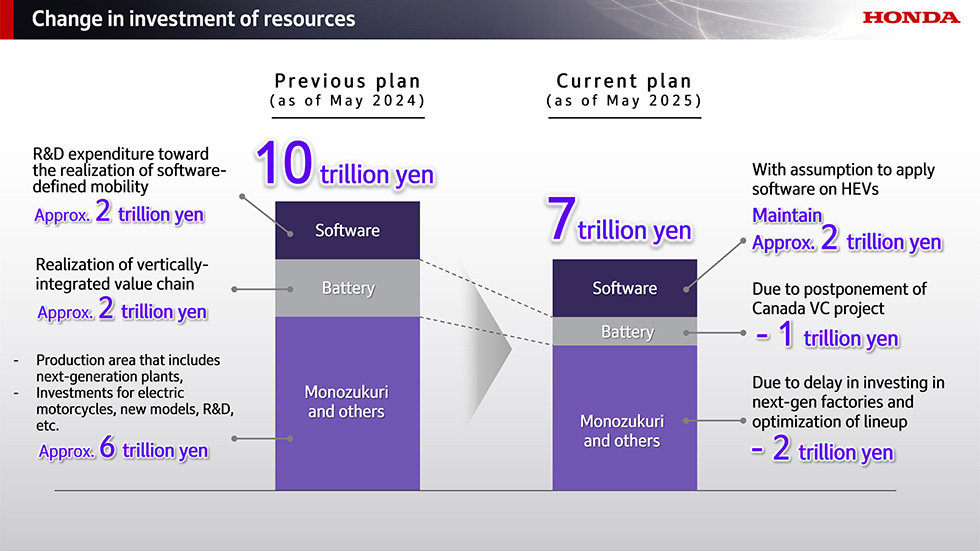
The Japanese automaker which had announced an ambitious plan to invest 10 trillion YEN towards establishing a robust EV value chain, exemplified by its planned battery-focused project in Canada. Now, the company has revised the CAPEX to 7 trillion YEN till 31 March 2031.
“As for EVs, due to the recent market slowdown, our EV sales ratio in 2030 is now expected to fall below the previously announced target of 30 percent. On the other hand, the demand for HEV models is high. Therefore, we will position our HEVs, mostly next-generation HEV models which we will introduce in 2027 onward, as a group of products that will play a key role during the transition period towards the popularisation of EVs,” said Mibe.
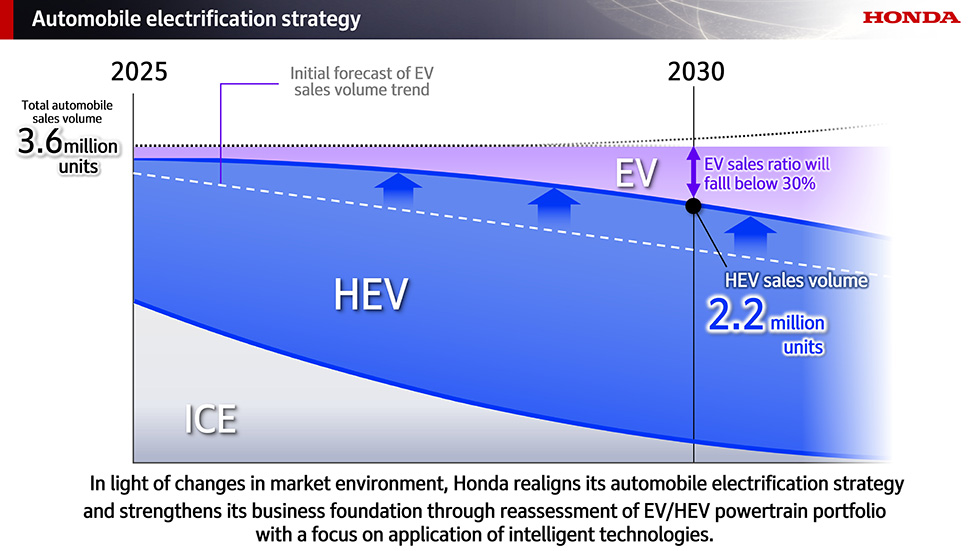
The company targets total automobile sales volume of 3.6 million units, with a HEV sales target of 2.2 million units by 2030.
Two-wheeler sales
Honda Motor Co. announced that its global two-wheeler sales reached a record 20.57 million units for the FY2025, capturing approximately 40 percent of the global two-wheeler market. The company set new all-time sales records in 37 countries and territories, reinforcing its leadership position in the two-wheeler segment.
Looking ahead, Honda expects continued growth in global motorcycle demand, particularly across the Global South, with India – a key market with a growing population and rising income levels – at the forefront. Industry-wide sales are projected to increase from the current 50 million units to approximately 60 million by 2030.
To capitalise on this growth, Honda plans to introduce a broader range of two-wheelers tailored to the varied needs of global customers. It will also optimise its supply chain to ensure more efficient delivery of both internal combustion engine (ICE) and electric models.
As part of its commitment to environmental leadership, Honda is accelerating the electrification of its motorcycle lineup. This includes improving fuel efficiency in ICE models and expanding its range of flex-fuel compatible options.
In early 2025, Honda launched the Active e: and QC1 electric models in India. The CUV e: and ICON e:, designed as global electric commuter models, have already rolled out in Indonesia, Vietnam, Thailand and the Philippines, with plans to expand to Europe and Japan later this year.
In a major strategic move, Honda will begin production of electric motorcycles at a dedicated, high-efficiency plant in India starting in 2028. This facility will focus on modularised models developed exclusively for electric platforms, aiming to boost affordability and scalability in electric two-wheelers.
Through these initiatives, Honda aims to broaden access to electric motorcycles, ultimately targeting the top position in the global electric motorcycle market.
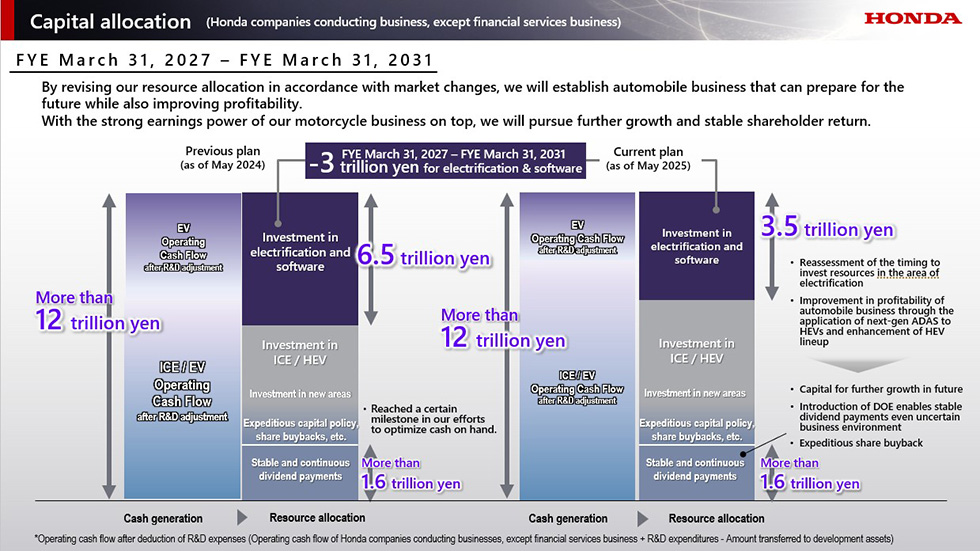
By continuing to launch competitive products and strengthening its supply chain for both ICE and electric vehicles, Honda is positioning itself for long-term profitability. The company aims to achieve a 50 percent global market share and a return on sales (ROS) exceeding 15 percent by fiscal year 2031.
HMC E-Valley And KPIT Technologies Partner For Micromobility Centre Of Excellence
- By MT Bureau
- December 24, 2025
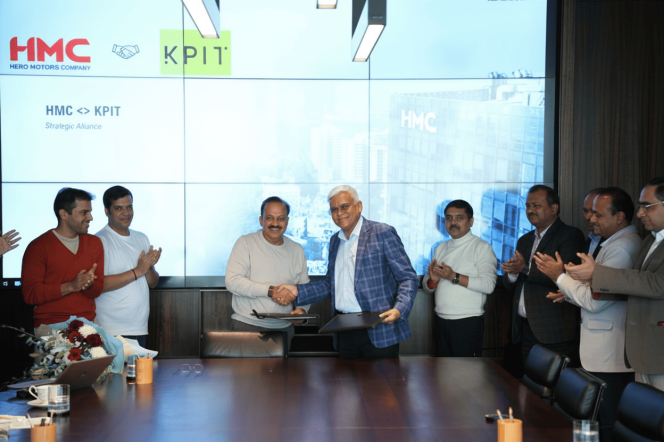
HMC E-Valley (HIVE) and KPIT Technologies have signed a Memorandum of Understanding (MoU) to establish an Independent Centre of Excellence (CoE) in Delhi-NCR. The facility will provide design and engineering services for global micromobility and L-category electric vehicle (LEV) manufacturers, including those producing e-bicycles.
The partnership targets the multimodal mobility market, specifically first-mile and last-mile connectivity solutions such as e-scooters. Industry data indicates that over 50 percent of current travel occurs within these last-mile segments.
The collaboration combines manufacturing and software expertise to develop LEV platforms.
As per the understanding, HIVE will manage business development, client engagement, prototyping and manufacturing enablement. While KPIT will lead solutioning, engineering delivery, programme management, design and software systems integration.
The CoE is designed to create end-to-end capabilities for the LEV segment, utilising KPIT’s mobility technology and HIVE’s manufacturing and supply chain infrastructure.
Pankaj M Munjal, Chairman, Hero Motors Company, said, “The light electric vehicle industry is at a pivotal juncture, demanding a fusion of cutting-edge hardware and smart software. This partnership with KPIT is a powerful convergence of those forces, signifying HIVE’s deep commitment to redefining urban mobility by delivering the next generation of high-quality, sustainable micromobility solutions globally.”
Kishor Patil, CEO & Managing Director, KPIT Technologies, said, “The future of mobility, even at the micromobility level, is defined by intelligent software and seamless systems integration. KPIT’s deep domain expertise in mobility technology will be crucial in equipping the Center of Excellence to develop world-class, cost-effective, and safe LEV platforms. We are excited to combine our software leadership with HIVE’s manufacturing excellence to accelerate the journey toward safer, smarter, and cleaner transportation.”
The agreement aims to accelerate the development of LEV solutions for the global market by integrating AI-driven mobility software with scalable manufacturing.
- ZF Group
- Samsung Electronics
- ADAS
- Harman International
- Christian Sobottka
- Mathias Miedreich
- Young Sohn
Harman To Acquire ZF Group’s ADAS Business For EUR 1.5 Billion
- By MT Bureau
- December 23, 2025
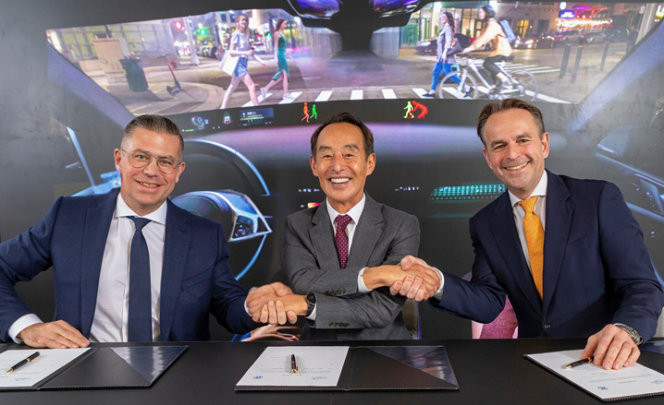
Harman International, a subsidiary of Samsung Electronics, has entered into a definitive agreement to acquire the Advanced Driver Assistance Systems (ADAS) business from ZF Group for EUR 1.5 billion.
The acquisition includes ZF's automotive compute solutions, cameras, radars and ADAS software. Approximately 3,750 employees across Europe, the Americas and Asia are expected to transfer to Harman upon completion of the deal, which is scheduled for the second half of 2026.
The move is part of Harman’s strategy to transition towards software-defined vehicles (SDV). By combining ZF’s ADAS technology with its own digital cockpit products, Harman aims to develop centralised compute platforms. This architecture is intended to link safety and assisted driving functions with in-vehicle connectivity and intelligence on a shared platform.
The integration is designed to reduce system complexity for car manufacturers (OEMs), allowing for more efficient innovation cycles and the scaling of context-aware vehicle experiences.
Christian Sobottka, CEO and President, Harman’s Automotive Division, said, “The industry is at an inflection point where safety, intelligence, and in-cabin experience must come together through a unified computing architecture. With this agreement, we take a strategic step to expand our portfolio with complementary ADAS capabilities that unlock a new class of cross-domain experiences ranging from perception-informed audio cues to more personalized, situation-aware driving. Combined with Harman’s long-standing automotive expertise and supported by Samsung’s broader technology leadership, this positions us to help OEMs design the next generation of intelligent, empathetic, and connected vehicles.”
Mathias Miedreich, CEO, ZF Group, said, “With Harman, we have found the ideal partner to fully unlock the growth and innovation potential of our ADAS business. At the same time, this deal makes an important contribution to reducing our company’s debt and allows us to focus our resources on the core technologies in which ZF is a global leader.”
Young Sohn, Chairman of the Board at Harman, added, “Since acquiring Harman in 2017, the company has scaled its automotive and audio business from USD 7 billion to more than USD 11 billion today. Adding ZF’s ADAS capabilities builds on that momentum. Harman will further expand its technology foundation to deliver safer, more intelligent, and more intuitive in-vehicle experiences. This acquisition reinforces Harman’s leadership in the industry’s transformation and underscores Samsung’s long term commitment to the future of mobility.”
Following the close of the transaction, Harman will align its engineering and ADAS teams to accelerate the development of next-generation platforms. The companies have committed to maintaining support for existing programmes during the transition period. Carolin Reichert, Chief Strategy Officer of HARMAN, noted that the deal represents a ‘major milestone’ and demonstrated the company's ability to execute a ‘complex carve-out.’
Pioneer To Reveal 'Ride Connect' Motorcycle UX At CES 2026
- By MT Bureau
- December 23, 2025
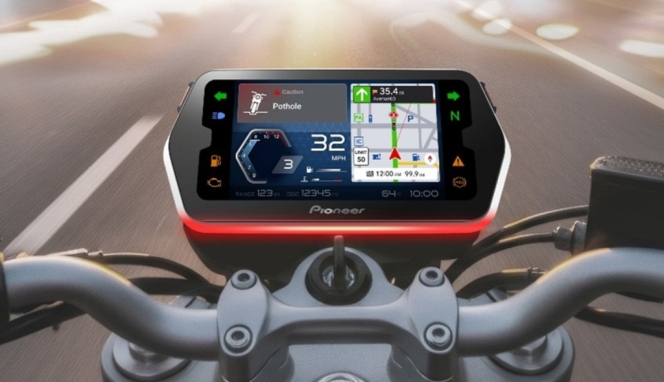
Pioneer Corporation has announced it will unveil Pioneer Ride Connect, a user experience (UX) solution for motorcycles, at CES 2026 in Las Vegas. The system is designed for the production of connected clusters and relies on software updates to provide features to riders.
The solution is the result of a technology collaboration with HERE Technologies. It integrates the HERE SDK, a cloud-based mapping and navigation kit covering more than 120 countries, to provide location-based services for the global two-wheeler market.
Pioneer Ride Connect incorporates several technologies intended to manage hardware costs and smartphone battery life:
- BLE-based Screen Projection: The system uses Bluetooth Low Energy (BLE) to project map images and service information from a smartphone onto the onboard cluster. This method reduces the processing power required by the motorcycle's hardware and lowers smartphone power consumption.
- HMI and AI Integration: The platform features Voice Tap, a voice-based Human-Machine Interface (HMI) for hands-free operation. Edge AI is used to share real-time traffic, weather and hazard data.
- Global Navigation: Through the HERE SDK integration, the system provides routing and traffic information optimised for motorcycles. It includes an offline mode for use in areas with limited network connectivity.
The development follows a partnership between Pioneer and HERE Technologies established in December 2024. The HERE SDK allows for the development of location-aware applications featuring routing and geocoding services across Android, iOS and Flutter platforms.
Pioneer stated that the integration of these technologies serves as a foundation for providing connected services to two-wheeler manufacturers and riders globally.
Seiji Tanezawa, Executive Officer of Pioneer, in charge of business development and strategic alliances, said, “Pioneer Ride Connect is a revolutionary platform that continuously provides software-based upgrades to motorcycles’ UX. By combining Pioneer’s industry-leading expertise in designing a compelling UX with HERE Technologies’ globally accessible Location Intelligence platform, Pioneer Ride Connect transforms the concept of smarter and safer connected two-wheelers into a tangible reality. I’m delighted to unveil our leading-edge technology and ambitious vision at the upcoming CES 2026.”
Deon Newman, Senior Vice-President & General Manager, Asia Pacific, HERE Technologies, said, "Pioneer’s ‘Ride Connect’ brings a smarter, safer motorcycle experience to life - and we’re proud to power it with HERE SDK. Together, we’re making connected services accessible to riders across global markets, with reliable navigation and motorcycle‑optimised routing that work in dense cities to remote mountain roads. It's a meaningful step forward for connected mobility.”
Kinetic Watts & Volts Partners With Jio Things For Connected EVs
- By MT Bureau
- December 22, 2025
Kinetic Watts & Volts (KWV), the electric mobility arm of Kinetic Engineering, has entered a technology partnership with Jio Things, a subsidiary of Jio Platforms.
The collaboration will integrate voice-assisted controls, IoT-enabled digital clusters and connected vehicle technologies into Kinetic’s upcoming electric two-wheeler range.
The partnership aims to deploy a suite of digital features for Indian riders, utilising Jio’s IoT ecosystem, which includes hardware, cloud infrastructure and device management.
The collaboration will introduce several capabilities to the Kinetic EV platform:
- Voice Assistance: Interaction for vehicle functions.
- Smart Clusters: Digital instrument panels providing real-time data and infotainment.
- Telematics: Cloud-based analytics for performance monitoring and diagnostics.
- Fleet Management: Tools for commercial operators to track and manage vehicle assets.
The connected platform will be embedded across future KWV models to provide a standard digital experience across different customer segments.
Ajinkya Firodia, Vice-Chairman & Managing Director, Kinetic Watts & Volts, said, “Kinetic has always stood for democratizing mobility and innovation. With this partnership, we now extend that commitment into digital mobility, bringing voice assistance and connected features to everyday riders, so technology becomes truly intuitive and useful. This collaboration also stays true to our motto of ‘Easy’ a philosophy already visible in practical features such as Easy Key, Easy Flip and Easy Charge; and now strengthened with seamless digital experiences that simplify ownership for our customers.”
Ashish Lodha, President, Jio Platforms, said, “Our partnership with Kinetic exemplifies our vision to build a truly connected automotive ecosystem in India. By bringing Jio’s voice assistance and IoT capabilities to the two-wheeler segment, we are not just upgrading vehicles; we are redefining the interaction between man and machine, bringing the benefits of smart mobility to every Indian rider.”
The partnership seeks to combine Kinetic’s manufacturing experience with Jio’s digital infrastructure to make connected electric vehicles more accessible. Objectives include improving rider safety, increasing digital uptime and providing data analytics for fleet operators.






Comments (0)
ADD COMMENT